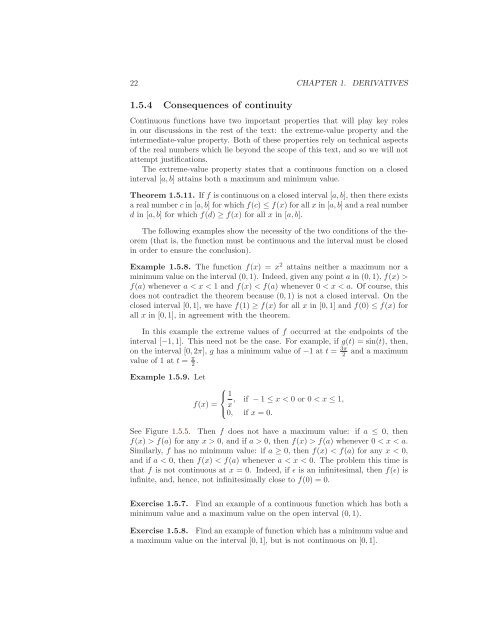Yet Another Calculus Text, 2007a
Yet Another Calculus Text, 2007a
Yet Another Calculus Text, 2007a
You also want an ePaper? Increase the reach of your titles
YUMPU automatically turns print PDFs into web optimized ePapers that Google loves.
22 CHAPTER 1. DERIVATIVES<br />
1.5.4 Consequences of continuity<br />
Continuous functions have two important properties that will play key roles<br />
in our discussions in the rest of the text: the extreme-value property and the<br />
intermediate-value property. Both of these properties rely on technical aspects<br />
of the real numbers which lie beyond the scope of this text, and so we will not<br />
attempt justifications.<br />
The extreme-value property states that a continuous function on a closed<br />
interval [a, b] attains both a maximum and minimum value.<br />
Theorem 1.5.11. If f is continuous on a closed interval [a, b], then there exists<br />
arealnumberc in [a, b] for which f(c) ≤ f(x) for all x in [a, b] andarealnumber<br />
d in [a, b] for which f(d) ≥ f(x) for all x in [a, b].<br />
The following examples show the necessity of the two conditions of the theorem<br />
(that is, the function must be continuous and the interval must be closed<br />
in order to ensure the conclusion).<br />
Example 1.5.8. The function f(x) =x 2 attains neither a maximum nor a<br />
minimum value on the interval (0, 1). Indeed, given any point a in (0, 1), f(x) ><br />
f(a) whenever a


















